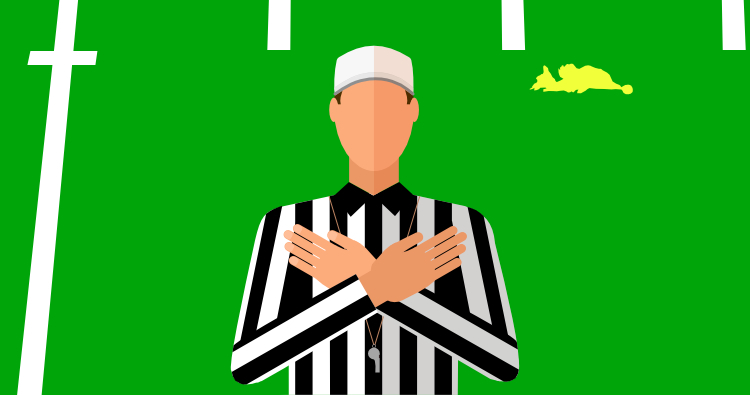Medicare penalties can be expensive.
Most Medicare penalties last the rest of your life.
I know you’ve probably heard a lot of bits of advice about what to do so you don’t get hit with a Medicare penalty. Maybe your sister gave you a heads up. Your golfing buddies could have warned you what not to do.
But, like most things I hear from my clients and other folks I talk to about Medicare, there are a lot of half-truths and misconceptions that people have heard. Sometimes you’ve been told something that’s flat out wrong.
So, let’s clear the air here, and figure out what you really can (and can’t) be penalized for on Medicare. And, we’ll look at what you can do to avoid those penalties. Let’s look at each part of Medicare one at a time…
More...
Get a quote on Medigap plans in your area
Medicare Part A Penalty
Almost none of you will have to worry about Part A penalties, but let’s take a look at them anyway to cover our bases.
You only would have to pay a Part A penalty if you have to pay a monthly premium for Part A. Now, everyone has to pay a premium for Medicare, but that premium is specifically for Part B (which we’ll talk about next). Only about 1% of folks that have Medicare actually owe a premium for Part A.
The only way you owe a premium for Part A is if you don’t have a long enough work history where you paid taxes to Medicare out of your paycheck. As long as you’ve paid Medicare taxes for 10 years (40 quarters) or more, you’re entitled to premium-free Part A. Sometimes you can even get premium-free Part A based on your spouse’s work history.
Part A penalty amount
If you owe a premium for Part A, and don’t sign up for Part A when you’re first eligible, you’ll almost certainly owe a penalty when you do sign up. However, one exception is if your still covered under your, or your spouse’s, employer group health plan. But, check with Social Security and that employer’s benefits department first. See if they require you to sign up and pay for Part A while you have their plan.
The Part A penalty amount is 10%. You’d have to pay it after you sign up for Part A, and pay if for twice as long as you delayed getting Part A. Let’s look at a quick example:
Example: Jerome kept working at 65 and didn’t sign up at all for Medicare. He retires at 68 and wants to get Medicare Parts A & B. Jerome only paid Medicare taxes for 20 quarters (5 years total) when he worked.
Penalty: Jerome’s Part A premium would normally be $413 per month in 2017. However he has to pay a 10% penalty ($41.30) for a total Part A premium of $413 + $41.30 = $454.30. He will have to pay 10% more for the next 5 years as well (6 years total)
However, much more common is the…
Medicare Part B Penalty
Just like Part A, if you don’t sign up for Part B when you’re first eligible, you’ll likely owe a Part B late enrollment penalty. Where most people get confused is when employer coverage is part of the picture.
If you have coverage through an employer because you or your spouse are still working, you probably don’t have to sign up for Part B. But, if the employer you’re covered through has less than 20 employees, you do have to sign up for Part B.
NOT signing up for Part B at 65 if your employer has more than 20 employees is one of my 31 tips to save money on Medicare. Interested in learning about 30 others? Get your copy of my FREE e-book "31 Ways To Save Money on Medicare"
This rule is a little different if you’re younger than 65 and entitled to Medicare because of a disability. In this case, you must sign up for Part B if the employer you’re covered through has less than 100 employees.
Part B penalty amount
The Part B penalty is much steeper than that of Part A because it lasts for the rest of your life on Part B. This penalty is also 10%, but it’s 10% multiplied by the number of years you should’ve had Part B, but didn’t.
Example: Barb kept working at 65 for a small employer with 12 employees, and didn’t sign up at all for Medicare. She retires at 70 and wants to get Medicare Parts A & B.
Penalty: Barb’s Part B premium would normally be $134 per month in 2017. However she has to pay a 50% penalty because she didn’t have Part B for 5 years from when she was first eligible. Her penalty is 50% x $134 = $67; so her total premium is then $67 +$134 = $201. She’ll pay this 50% penalty the entire time she has Part B.
Medicare Part D Penalty
The Part D penalty has to do with not having “creditable” drug coverage. The following are the most common reasons you could be charged this penalty:
- You’re still covered by an employer group plan with no “creditable” drug coverage
- Many folks never even think about signing up for a separate Part D drug plan if they’re still covered at work. But, sometimes these group plans don’t meet Medicare’s criteria for being “creditable”.
You see, “creditable” coverage simply means that the drug coverage of that plan is expected to pay as much as Medicare’s prescription drug coverage, on average. Your health plan is required to notify you once you’re first eligible for Medicare, and once per year afterwards, if your drug coverage meets Medicare’s “creditable” standards.
- You intentionally decide not to get a Part D drug plan
- Most people think it doesn’t make sense to pay for prescription insurance if they’re not taking any prescriptions. Or, some of you may be on a few generic medications that cost little to nothing at your local drug store. So, you decide not to sign up for a drug plan.
But, later on down the road you may start taking more meds and possibly some expensive ones. If you want to sign up for prescription insurance at that time, the Part D penalty would be tacked on.
Part D penalty amount
The Part D penalty amount is 1% multiplied by the number of months you didn’t have creditable coverage. Once you have this total penalty percentage, it’s then multiplied by the average Part D plan monthly premium amount. This average amount is actually called the “national beneficiary base premium”, which tends to go up a little bit every year.
Like the Part B penalty, the Part D late enrollment penalty (LEP) lasts for as long as you’re on Part D forever. And, even though your penalty percentage stops going up, your penalty amount will keep increasing. This is because the national beneficiary base premium tends to increase gradually over time.
Example: Jackie decided not to get a Part D drug plan when she turned 65 in September of 2014 and enrolled in Medicare because she wasn’t taking any prescriptions. Later, in 2016 she decided to get a plan because her sister informed her of the Part D penalty.
Penalty: Jackie’s Initial Enrollment Period was from June – December of 2014, centered around her September birth month. If she signed up during the Annual Enrollment Period in 2016, her plan would start in January of 2017. This is calculated as 24 months without coverage, multiplied by the “national base beneficiary premium” of $35.63. So her penalty is 24% x $35.63 = $8.60 (which is rounded to the nearest $0.10).
How to contest your Part D LEP
If you disagree with your LEP, you can file for what’s called a "reconsideration". Some of the reasons you can contest this LEP are you:
- Can prove you did have creditable coverage
- Had drug coverage, but didn’t get a notice that clearly explained if it was creditable
- Were not actually eligible to enroll in a Part D plan
- Had a serious medical emergency and were unable to enroll
- Qualified for Part D Extra Help
Want to contest your LEP? Here is the LEP reconsideration request form.
When the Part D LEP is removed
If you became eligible for Medicare younger than 65 and did not have creditable coverage, you will be responsible for a LEP just like Medicare folks 65 and older. However, once you turn 65 your LEP is wiped out, so to speak. If you sign up for a Part D plan at this time, you won’t be responsible for any LEP.
If you have an LEP and become eligible for Extra Help, your LEP would go away. The Extra Help program is also called Low Income Subsidy (LIS). So if your income and/or financial resources fall under certain thresholds, Medicare would remove your penalty.
Want to discuss your situation with a Medicare expert? Click the button to book a FREE personal 1-on-1 consultation.
Medicare Part C Penalty
Good news! There is no Part C penalty!
Medicare Advantage (MA) Plans are also known as Part C. They are one way to provide secondary insurance to Medicare Parts A & B. So, enrolling in these plans is not required. Therefore there is no penalty for not signing up.
You could get a Medigap policy instead of an MA plan to provide your secondary coverage. But, just like MA plans, there is no penalty for not enrolling in a Medigap plan either.
Conclusion
You can see that there a couple things in common with all Medicare penalties:
- They’re charged because of enrolling late in that particular Part of Medicare
- They’re charged only after you enroll in that Part
Hopefully now you have a pretty good idea of what you can and can’t be penalized for under Medicare. This should give you a lot more peace of mind so you can stop being so confused by all the rumors and misinformation out there. It’ll also help your pocketbook, so you can avoid these penalties, and even avoid signing up for duplicate Medicare coverage if you’re still covered through work.

